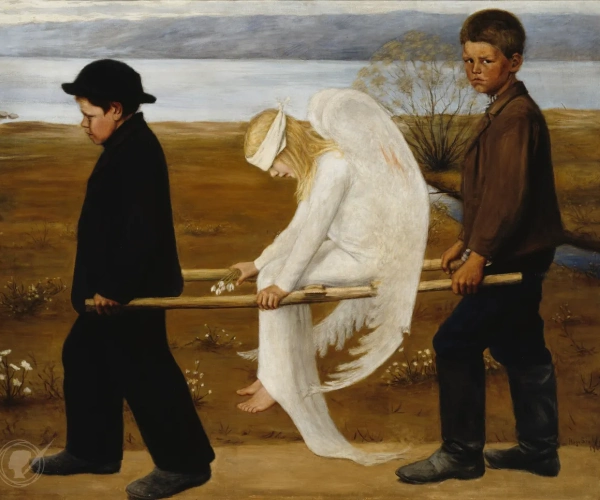The Wounded Angel from 1903
Hugo Simberg's "The Wounded Angel" is an enigmatic and haunting artwork that depicts a young angel being supported by two young boys as they walk through a desolate, wintry landscape. Simberg, a Finnish symbolist painter, created this masterpiece in 1903, and it has since become one of his most iconic and revered works. The painting exudes a sense of melancholy and mystery, as the wounded angel gazes into the distance with a solemn expression, her ethereal and almost ghostly presence contrasting with the somber setting.
The use of symbolic imagery in "The Wounded Angel" adds layers of meaning to the artwork. The angel's wounded and bandaged wing can be interpreted as a metaphor for the human experience of pain, suffering, and resilience. The two boys supporting the angel evoke themes of compassion, empathy, and the burden of caring for others in times of need. The wintry landscape further intensifies the atmosphere of isolation and vulnerability, while also suggesting the potential for renewal and transformation.
Simberg's mastery of color and light is evident in "The Wounded Angel," as he deftly employs a muted and restrained palette to convey a sense of eeriness and otherworldliness. The contrast between the pale, almost spectral figure of the angel and the deep, shadowy background creates a captivating visual tension that draws the viewer into the emotional core of the painting.
Overall, "The Wounded Angel" stands as a timeless and evocative representation of the human condition, inviting viewers to contemplate themes of compassion, suffering, and the transcendent power of art to confront and illuminate the complexities of existence.







No Comments Yet...